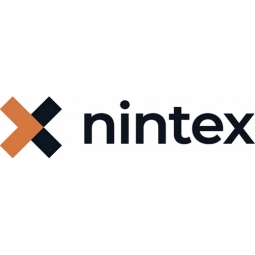Download PDF
Denver's Virtual Transformation of Emergency Operations Center Amid Pandemic
Technology Category
- Infrastructure as a Service (IaaS) - Virtual Private Cloud
- Robots - Wheeled Robots
Applicable Industries
- Cities & Municipalities
- Telecommunications
Use Cases
- Search & Rescue
- Smart City Operations
The Challenge
On March 13, 2020, Denver’s Emergency Operations Center (EOC) faced an unprecedented challenge. The EOC, which is accustomed to responding to emergencies such as blizzards, floods, and power outages, had to quickly adapt to the new reality of the COVID-19 pandemic. The city officials sent workers home, including those on the EOC, as part of the government’s stay-at-home response to the pandemic. The challenge was to keep the EOC’s shift of 100 members working to ensure public safety when every tool and process they relied on was physically in a 1,000 sq. ft. facility to which they would no longer have access. The EOC had to quickly move its operations online to ensure productivity while EOC members worked from home during COVID-19 social distancing measures.
About The Customer
The City and County of Denver, Colorado is one of the fastest-growing cities in the U.S. with a population of approximately 729,000. The City and County employ more than 11,000 people across 50+ business units, and its EOC is made up of 100 total members with representatives from across the city. The EOC is responsible for responding to emergencies such as blizzards, floods, and power outages. During the COVID-19 pandemic, the EOC had to quickly adapt to the new reality of remote work and social distancing measures.
The Solution
Denver’s Technology Services department set up a Microsoft Teams site to serve as an online EOC in which workers could communicate and collaborate. However, there were still workflows that were dependent on moving some 50 pencil-and-paper forms from desk to desk in processes that could each take up to seven steps. To overcome this, Denver’s Technology Services department used Nintex Forms to quickly bring 65 paper forms online, enabling EOC workers to continue to work productively from home. They also used Nintex Mobile to create a symptom monitoring application for all Denver staff that had to report in-person for work during the pandemic. The team was able to digitize 20 forms over a weekend and quickly brought that number up to 65 over the three-month activation.
Operational Impact
Quantitative Benefit
Related Case Studies.

Case Study
Turning A Stadium Into A Smart Building
Honeywell created what it called the “intelligent system” for the National Stadium in Beijing, China, turning the venue for the opening and closing events at the 2008 Summer Olympics into a “smart building.” Designed by highly controversial artist Ai Weiwei, the “Bird’s Nest” remains one of the most impressive feats of stadium architecture in the world. The 250,000 square meter structure housed more than 100,000 athletes and spectators at a time. To accommodate such capacity, China turned to Honeywell’s EBI Integrated Building Management System to create an integrated “intelligent system” for improved building security, safety and energy efficiency.
.png)
Case Study
Smart Street Light Network (Copenhagen)
Key stakeholders are taking a comprehensive approach to rethinking smart city innovation. City leaders have collaborated through partnerships involving government, research institutions and solution providers. The Copenhagen Solutions Lab is one of the leading organizations at the forefront of this movement. By bringing together manufacturers with municipal buyers, the Copenhagen Solutions Lab has catalyzed the development and deployment of next-generation smart city innovations. Copenhagen is leveraging this unique approach to accelerate the implementation of smart city solutions. One of the primary focus areas is LED street lighting.

Case Study
Buoy Status Monitoring with LoRa
The Netherlands are well-known for their inland waterways, canals, sluices and of course port activities. The Dutch Ministry of Infrastructure indicates that there are thousands of buoys and fixed items in and near water environments that would profit from IoT monitoring. One of the problems with buoys for example, is that they get hit by ships and the anchor cable breaks. Without connectivity, it takes quite some time to find out that something has happened with that buoy. Not to mention the costs of renting a boat to go to the buoy to fix it. Another important issue, is that there is no real-time monitoring of the buoys at this moment. Only by physically visiting the object on the water, one gains insight in its status.

Case Study
China Mobile Smart Parking
Smart Parking, powered by NB-IoT technology, is making it easier for drivers to find free parking spots. Cities can better manage their parking assets and maximize the revenue available to them as a result. Drivers searching for parking create congestion and pollution by circling and hunting for available parking. Smart Parking services are able to significantly ease these problems by guiding a driver directly to a parking space.

Case Study
Barcelona Case Study
Barcelona’s heavy traffic and its associated high levels of pollution were the primary factors that motivated some companies and universities to work on strategies for improving traffic in the city centre. Bitcarrier is one of the technologies involved in the In4Mo Project, whose main objective is to develop the applications that form the core of smart mobility, one of the fundamental pillars of the smart city concept.






